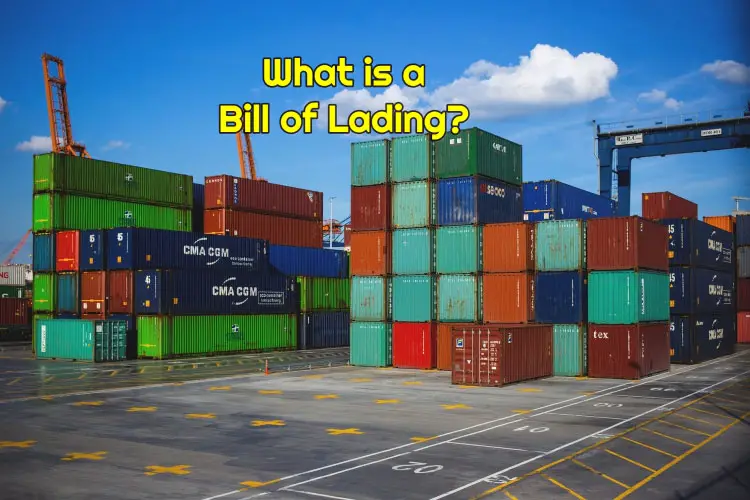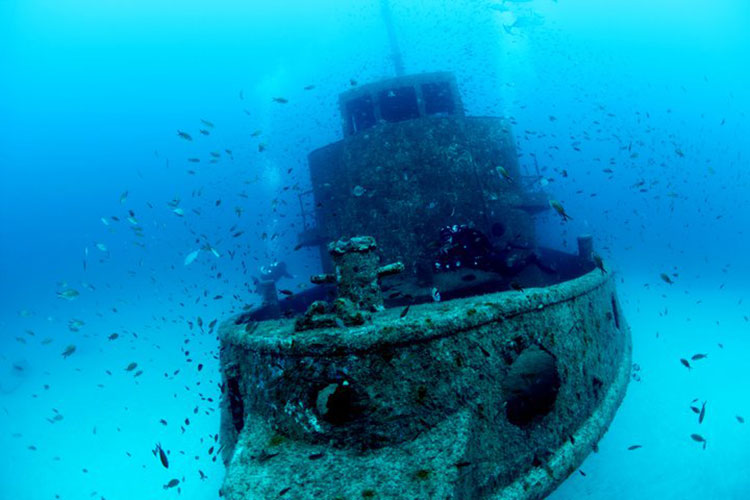13 Major Ports in China
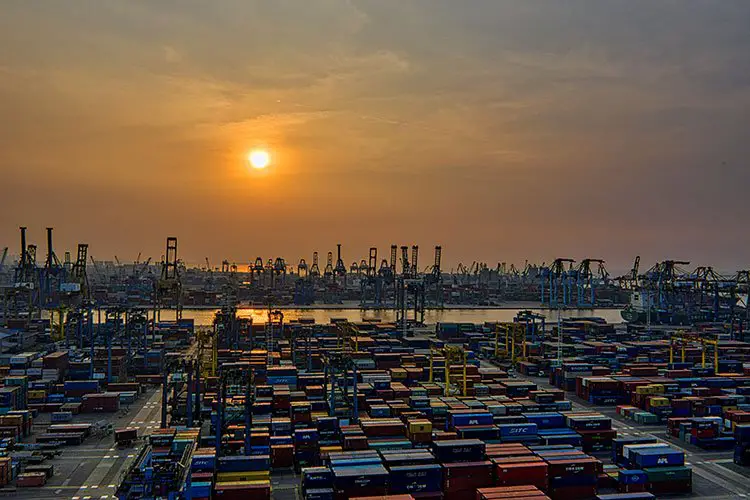
China is called “The World’s Factory”. It is the biggest manufacturing country and hence, one of the biggest exporters. No wonder, there a number of major ports in China which help the country ship its wares to all the parts of the world.
China has 14,000kms of coastline and hence the shipping and trade industry a vital link for trade & commerce. The shipping industry in China comes under the Ministry of Transport.
Fun Fact: About 90% of the world’s containers are manufactured in China.
There are some of the world’s busiest and largest ports in China. They handle all the shipments and transportation smoothly. Well-developed infrastructure of ports and connections to main global ports have made them a chief factor of China’s trading sector. Let’s take a look at the major ports of China.

Top Ports in China
1) Port of Shanghai
Port name: Shanghai
Port code: CNSHA
IATA code: SHA
Country: China (CN)
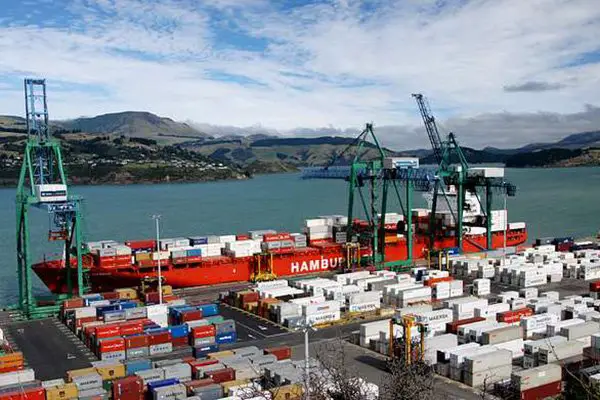
Shanghai is China’s most prominent financial hub. It is the most populous city in China in terms of urban area. It is a global center for finance, technology, transportation, etc.
The Port of Shanghai is the busiest and the largest container port in the world. It overtook the Port of Singapore to become the world’s busiest container port in 2010. It is also known as SIGP (code CN SGH). The port spans 3,619.6 sq km
Shanghai port is located in the eastern part of China. The East China Sea is located to the eastern side of the port and Hangzhou Bay is to the south of the port.
The port of Shanghai is economically an important transport hub as it is a getaway for foreign trade. It is a heavy traffic port and situated in a city with a high urban population. Hence, it is one of the four large port megacities in the world.
It has a deep seaport and river port as well. The operation and management of the terminals of the port are done by the Shanghai international port group (SIPG). It is also responsible for the construction work related to the manufacturing and building of operating port facilities. The transportation of domestic as well as international cargo by land and water is also handled by the group.
The main supplies from the port are coal, petroleum, machinery, and metal-ore. It is the largest port in China as one-fourth of import and export cargo traffic of the whole of China is done by the Port of Shanghai. It provides about 280 shipping routes, thus strengthening the global connection.
In 2019, the port managed about 43.3 million twenty-foot equivalent units (TEU), that is the unit of cargo capacity. These numbers are still increasing and thus making world records. The transhipments have increased by 142% from 2007 to 2016. It is also focusing on investments over smart and green ports, to have an environmentally friendly shipping process.
Every year, almost 2,000 container ships depart from this port.
The history of the Shanghai port dates back to 1842 when it was opened for international trade under the Treaty of Nanjing.
These are the Port of Shanghai Container Terminals
1) Shanghai Container Terminals Company, Limited (Wusongkou area)
2) SIPG Zhendong Container Terminal Branch (Waigaoqiao Area)
3) Port of Shanghai Shengdong International Container Terminal Company, Limited (Yangshan Deepwater Port )
4) Port of Shanghai Pudong International Container Terminals, Limited (Waigaoqiao Area)
5) Port of Shanghai East Container Terminals Company, Limited (Waigaoqiao Area )
6) Port of Shanghai Mingdong Container Terminals, Limited (Waigaoqiao Area)
7) Port of Shanghai Guandong International Container Terminal Company, Limited
2) Port of Shenzhen
Port name: Shenzhen
Port code: CN-SNZ
IATA code: SNZ
Country: China (CN)
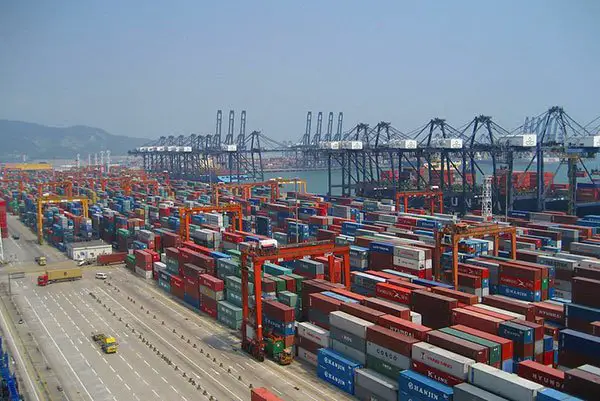
The Port of Shenzhen is one of the largest ports in China. It is located on the coastline of Shenzhen city which is also known as China’s Silicon Valley. The coastline stretches about 280km long.
There are various ports along the coastline and they are collectively called the Port of Shenzhen. The port is divided into two parts by New territories and the Kowloon peninsula of Hong Kong, i.e the Eastern port and Western port.
The port is ranked fourth largest and busiest container port in the world. There are 40 shipping companies present at the port. They have set up about 130 international container routes.
Around 560 ships per month are managed at the port. It has 140 berths in total. Among those 140 berths, 51 berths are for vessels of 10,000 tonnes deadweight and above. There are 18 container berths, 18 passenger ferries, and 23 non-production berths.
It is also one of the fastest-growing container ports in the world. It is connected to over 100 countries by more than 300 ports in the world. As per 2019 data, the port handled about 25.7 million TEU, and the annual shipping transportation capacity is 194.9 million tons. The Shenzhen Yantian port holdings and the Shenzhen Chiwan Wharf Holdings are the carriers that operate here.
The Shenzhen port is working towards making itself a modern and sustainable port.
3) Ningbo-Zhoushan
Port name: Ningbo
Port code: CNNGB
IATA code: NGB
Country: China (CN)
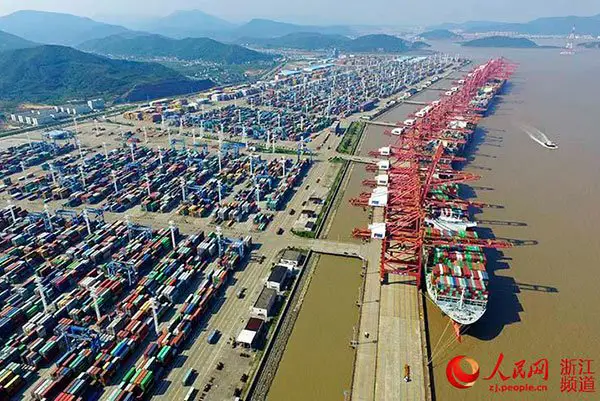
The Ningbo-Zhoushan port is near the Port of Shanghai. This port is also located on the coast of the East China Sea. The Yangtze River is to the north side of the port and Hangzhou Bay is to the southeast side.
The establishment of the Ningbo port took place during China’s ancient history in 738. It was one of the three major ports for foreign trade. The Port of Ningbo and the Port of Zhoushan were neighboring ports, but in 2006 they were combined to form one major cargo handling base.
The Ningbo-Zhoushan port is the busiest in terms of cargo tonnage in the world and it is the third largest and busiest port in the world. The port handled the transportation of about 27.5 million TEU in 2019. In 2015 the port handled 888.96 million tons of cargo.
The port has different types of ports, such as a seaport of Beilun, estuary port of Zhenhai, and inland river port of old Ningbo harbor. The port is economically very important as it is used for cargo shipment, shipment of raw materials, and manufactured goods from North and South America is done through this port. The port is globally linked with over 90 countries and more than 560 ports.
There are in total 191 berths in together with 39 water berths having a capacity of 10,000 tonnage and above. The water quality of the port has degraded in the past ten years due to the constant operations of maritime traffic.
Also read: Ancient ports of India
4) Guangzhou Port
Port name: Guangzhou
Port code: CNCAN
IATA code: CAN
Country: China (CN)
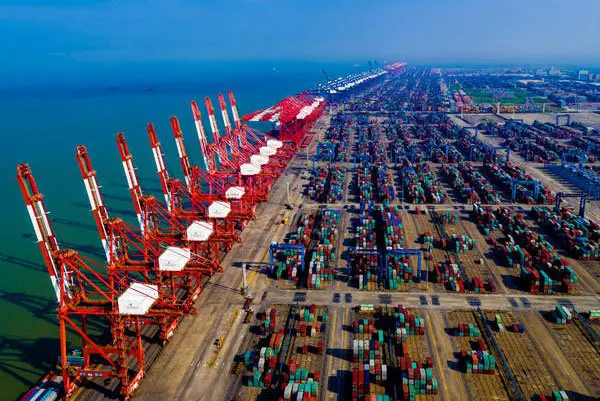
Guangzhou port is located in the southern part of China at the Pearl River delta. It is the main seaport of Guangzhou city. It is the fourth largest and busiest port in the world and third in China, also it is the largest port in South China. It has emerged from the previous port of Huangpu port.
The port is an important economic and transport base for the Guangdong province at which it is located and the pearl river delta region. It is also an important transport center for nearby provinces of Yunnan, Guizhou, Sichuan, Guangxi, Hubei, Jiangxi, and Hunan.
The port also serves as a gateway for other harbors nearby, as it is located at the entrance of the pearl river. Geographically the port is situated where the most important rivers of Dongjiang, Xijiang, and Beijiang meet.
The port is managed by the Guangzhou Port Group co. Ltd, which is owned by the state government. This company was formed from Guangzhou Harbor Bureau on February 26, 2004.
The transportation handled by the port in 2019 was 23.2 million TEU. The port does the shipping of oil, coal, grains, chemical fertilizers, steel, ore, automobiles, agricultural products, industrial and manufactured products. The port crossed 300 million tons and 665 million TEUs in 2006.
The port has played a major role in the success of the missionary hospital that is the Canton Hospital as it provided passenger and logistic services. There are around 4600 berths at the port.
It is also the part of the maritime Silk Road that connects the Chinese coast to the southern tip of India, to Mombasa then to the Mediterranean Sea through the Suez canal.
Overall the port is one of the most significant ports of China and globally as well. It reaches more than 80 countries and links to about 300 ports internationally. The port is working on expanding its business soon.
5) The Port of Hong Kong
Port name: Hongkong
Port code: HKHKG
IATA code: HKG
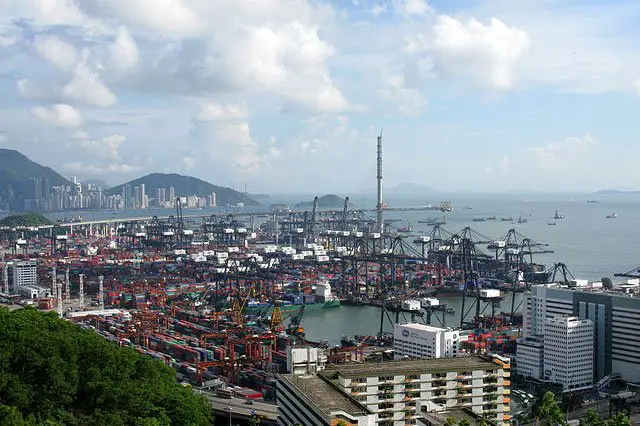
The port of Hong Kong is located on the Kowloon peninsula by the South China Sea. It is one of the busiest ports in the world because of its advancements in shipping movements and cargo handling capacities. It is on the Victoria Harbor which provides suitable conditions for berthing and handling of ships. The port is a deepwater seaport and major trade conducted is of containerized manufactured ports.
The port is operated by the Marine Department under the Government of Hong Kong Special Administrative Region. The Port planning development is under the Hong Kong port development council and the development of the maritime industry is covered by the Hong Kong Maritime industry council.
The Port handled 29.3 million TEUs container transportation in 2007 but as per 2019 data, the transportation operated by the port is 18.4 million TEUs. The port is responsible for Hong Kong’s 89% cargo transportation. It can handle about 456,000 vessels per year.
The TEU value of the port has been in decreasing order for a few years but still, it is an important port because of its ability to handle cargo shipments, container traffic, ferry services, etc. to a very good extent.
The Hong Kong Port consists of 5 major terminals operated by these companies.
1) Modern Terminals, Ltd. (MTL);
2) Hongkong International Terminals Ltd. (HIT);
3) COSCO Information & Technology (H.K.) Ltd.;
4) Dubai Port International Terminals (DPI),
5) Asia Container Terminals Ltd. (ACT).
6) Qingdao Port
Port name: Qingdao
Port code: CNTAO
IATA code: TAO
Country: China (CN)
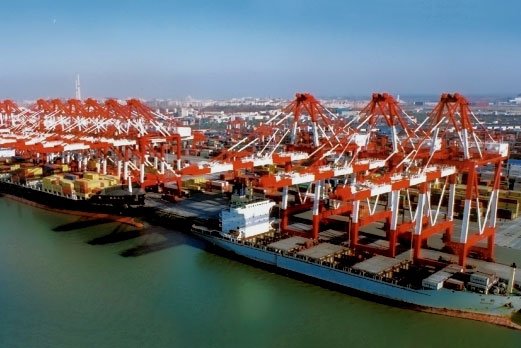
The Qingdao port is located in Qingdao city near China’s Yellow Sea. It is ranked seventh in the world’s busiest ports and in China, it is the 6th largest and busiest port. The port signed an alliance with South Korea’s shipping giant, the Port of Busan along with three other Chinese ports in East China’s Shandong province for a motive of building a shipping and logistics center in Northeast Asia.
There are four different areas in the port- the Dagang port area, Qianwan port area, Dongjiakou port area, and Huangdong oil port area. Huangdong port area is, particularly for oil tankers. The port also has a large terminal for operating iron ore shipments.
The container traffic of Qingdong port was 21 million TEUs in 2019. The port was involved in the 21st-century maritime silk road. It is connected to over 700 ports around the world. The port is handled by Qingdao Port International Co.Ltd.
The port is developing on good notes and is growing in terms of its shipment facilities and transportation capabilities.
7) Port of Tianjin
Port name: Tianjin
Port code: CNTSN
IATA code: TSN
Country: China (CN)
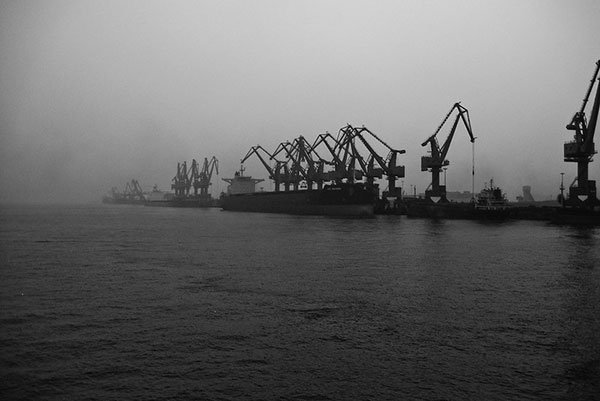
The Port of Tianjin is located in Northern China and is a main maritime gateway to the capital city of China, Beijing. It is the largest port in Northern China and one of the largest and busiest in the world. The port is on Haihe River’s estuary to the western shore of Bohai Bay.
The port is operated by Tianjin Transportation and Port Authority. The container traffic handled by the in 2019 was 17.2 million TEUs and the port traded with 180 countries by connecting to over 600 ports. It is also the largest man-made port in mainland China.
The shipping of Harbor craft is majorly done by Tianjin port. Most of the port engineering projects are under Tianjin Institute for Water Transport Engineering. There are various passenger terminals and cruise terminals. Tianjin cruise homeport is responsible for cruise facilities in the area. The ship repair sector for Tianjin port is handled by China Shipbuilding Industry Corporation (CSIC).
The land surface area of the port is 121 square kilometers. It has a lot of different facility sections within the port. The infrastructure of the port is well maintained. Thus, it is an important port with different features and characteristics.
8) Port of Dalian
Port name: Dalian
Port code: CNDLC
IATA code: DLC
Country: China (CN)
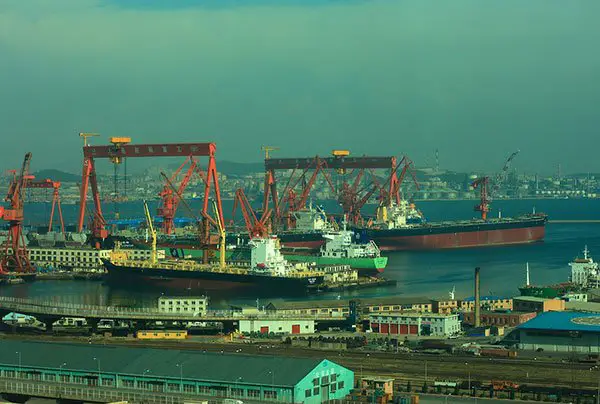
The port is located in Liaoning province at the southern tip of the Liaodong Peninsula. It is the most northern ice-free port and 2nd largest in terms of container transshipments in China. It is also the largest port for multipurpose uses in Northeast China.
The port is managed by Dalian Port Corporation ltd. which is a state-owned firm. It has successfully operated the container traffic of 8.7 million TEUs in 2019. There are about 80 modern production berths, out of which 38 berths are deep water berths suitable for vessels of more than 10,000 tonnes deadweight. It is majorly dependent on heavy industries like coal.
The port was able to link with over 160 countries by connecting to more than 300 ports. The port is working towards projects of infrastructure improvements and to strengthen the port’s operating capabilities.
9) Port of Xiamen
Port name: Xiamen
Port code: CNXMN
IATA code: XMN
Country: China (CN)
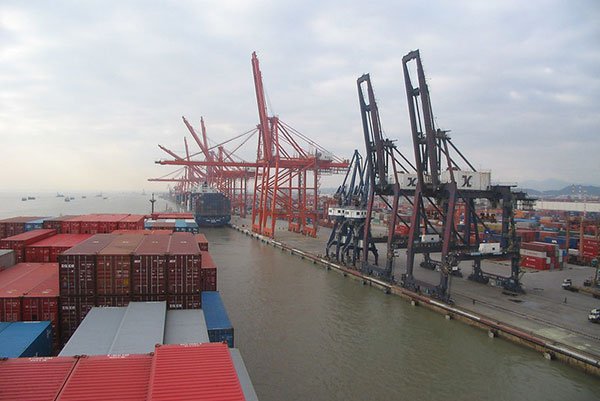
Xiamen port is located on Xiamen island and near the Jiulongjiang River. It is ranked 14 busiest and largest port in 2019’s data. It is capable of handling 6th generation large container vessels. The port is also one of the trunk line ports between the Asia-Pacific region.
The port handled 8.08 million TEUs of containers and about 191 million tons of cargo in 2013. In 2019, it was able to increase its container traffic operation to 11.1 million TEUs. It is almost connected to all major ports in the world by 68 shipping routes of over 50 countries. It has the potential to take calls of an average of 469 ships each month.
The Port of Xiamen has 122 working berths, which include 37 deep-water berths that host 53 international container shipping lines.
The port was merged with the neighboring port of Zhangzhou on 31 August 2010 to form the largest port in Southeast China. It has 12 areas namely Shihushan, Haitian, Heping, etc. The port is managed by Xiamen Port Authority that comes under Xiamen Municipal Government.
Almost all major companies have invested in this port. It is a well-managed and developed port of China.
10) Port of Yingkou
Port name: Yingkou
Port code: CNYIK
IATA code: YIK
Country: China (CN)
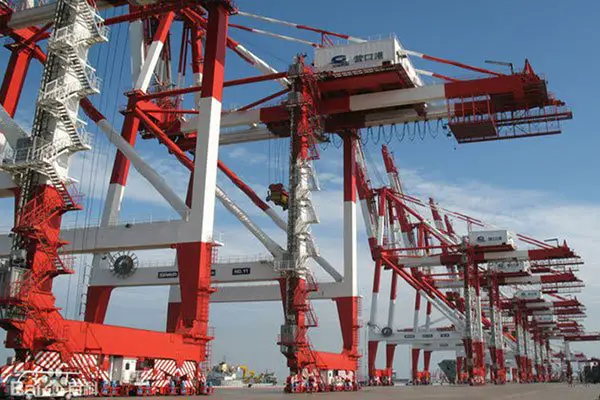
The port is located in Yingkou, Liaoning, and is an international seaport. It is among the top 10 ports in China. Furthermore, the port is also the second-largest port in northeast China and serves as a major import facility for parts of Mongolia and northeastern China.
The port has 78 berths and activities include shipping of oil tar, steel, timber, sugar, and much more. The port is operated by Yingkou Port Group Co. Their services consist of railway and highway transportation, pipeline transportation, and cargo loading. Also, on Fairy island, the port has 300 thousand crude oil wharves.
The transshipments and container traffic controlled by port according to data of 2019 is 5.5 million TEUs. The port increased its container throughput by 9.8% after 2013. The port covers 50 countries and regions by connecting to over 140 ports.
The port is growing well economically and has maintained the consistent performance of its trade and shipping.
This port has a long history. It started international trade in 1864.
11) Port of Taicang
Port name: Taicang
Port code: CNTAG
IATA code: TAC
Country: China (CN)
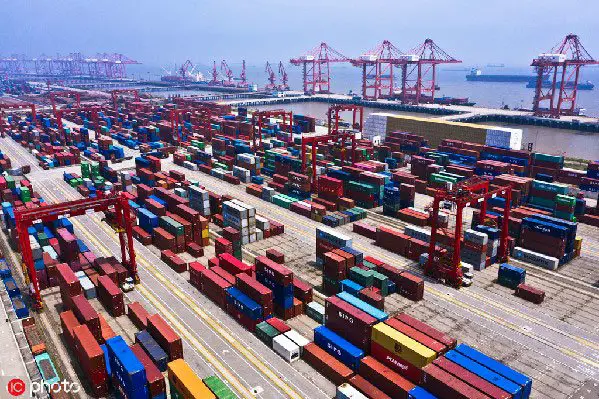
This port is located near the south bank of the Yangtze River. It is the first freshwater port in the Yangtze River. It is capable of handling containers, dry bulk cargo, and petrochemical products.
The port is part of the Suzhou port district. The port has the following terminals
1) Taicang International Container Terminal (TICT)
2) Taicang Zhenghe Container Port (TZCP)
3) Wangfang International Port (WIP), Meijin Port
4) Jiangsu Yangtze Petrochemical Terminal (JYPC)
5) Taicang Powershell Petrochemical Terminal (TPPT)
6) Taicang Wugang Iron Ore Port (TCWG)
7) Mobil Terminal.
Over 900 container vessels are handled here per month in 6 container berths. It is also having short-range services to countries like Taiwan, Korea, and Japan. The container traffic operated by the port in 2019 was 5.1 million TEUs. The port is equipped with enough facilities and connects to a lot of major ports in China.
12) Port of Lianyungang
Port name: Lianyungang
Port code: CNLYG
IATA code: LYG
Country: China (CN)
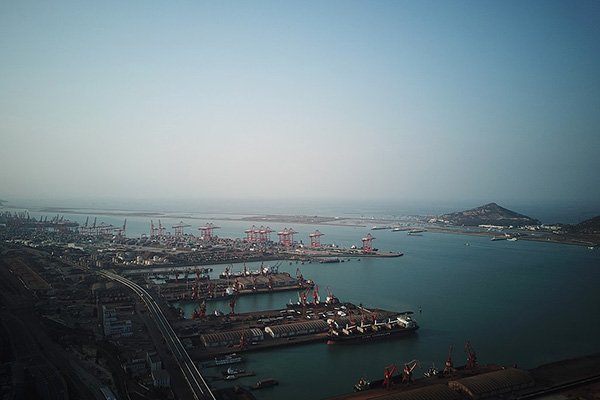
This port is located near the Qiangwei River of Jiangsu province. It is an important center for tourism, industry, and trade. There are in total 50 berths that handle coke, ore, bulk grains, coal, liquid chemicals, and breakbulk cargo. The shipping and trade handled were 4.78 million TEUs in 2019. It is a significant port for the domestic level of trade
13) Port of Rizhao
Port name: Rizhao
Port code: CNRZH
IATA code: RIZ
Country: China (CN)
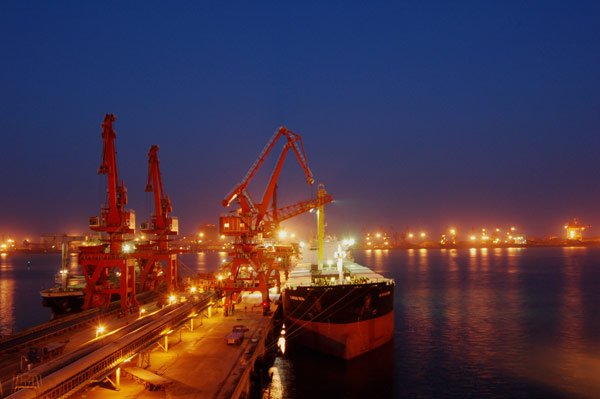
The port is located at the coast of Rizhao city in Shandong province. There are 46 deepwater berths. It has two main port areas namely the Lanzhao Port area and Shijiu Port area. It handled the shipping of around 284 million metric tons. In 2019, it handled 4.5 million TEUs of container traffic.
It is the tenth busiest port in China.
These are 13 major ports in China. They have contributed hugely to the economic development of China through trade and shipments.
Images courtesy
https://www.flickr.com/photos/zilpho/272476193
http://en.people.cn/n3/2016/1220/c90000-9157169.html
https://www.flickr.com/photos/mcs50/5611394830/in/photostream/
https://www.flickr.com/photos/klimenko/4035589328
https://www.orglinklog.com/news/industry-news/nansha-doubles-number-of-sailings-to-rotterdam-as-prd-pivot-port.html
https://commons.wikimedia.org/wiki/File:Qingdao_port.jpg
https://www.flickr.com/photos/lrwileypics/2742581194/
https://m.chinaknowledge.com/News/DetailNews/83034/Yingkou-Port-Group-completes-RMB-59-bln-debt-to-equity-swap-deal
http://www.chinadaily.com.cn/m/jiangsu/taicang/2019-07/16/content_37492497.htm
https://commons.wikimedia.org/wiki/File:Port_of_Lianyungang_PANO0005.jpg


